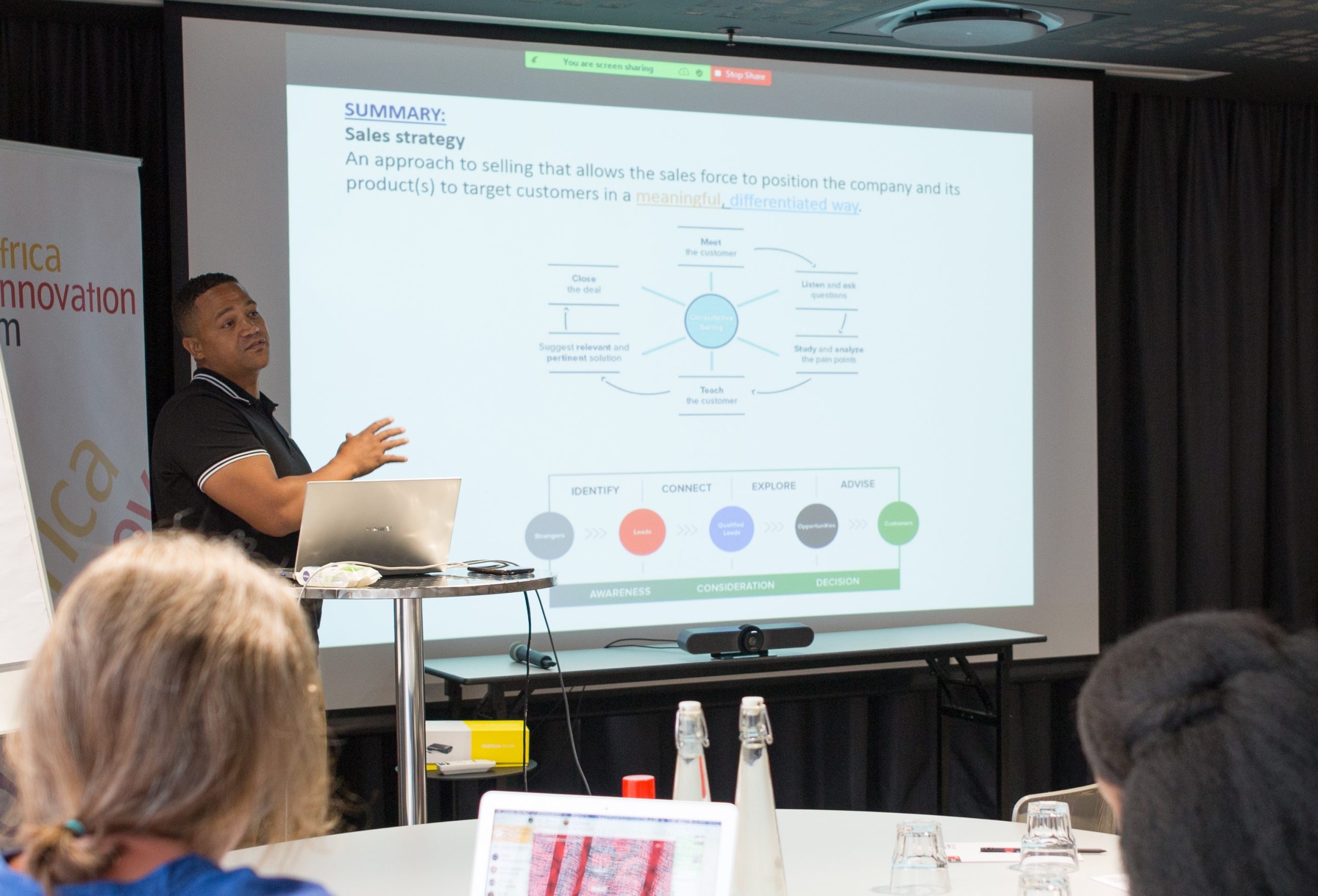Developing a successful media sales strategy from scratch is daunting. How do you identify potential clients and price your content to sell? How do you secure a sales meeting and ultimately land the deal? According to digital sales guru Carl Davis, a successful sales strategy is a science that relies on well-planned systems.
The experienced sales trainer and Managing Director at Burn Media Group led a half-day hybrid workshop on Digital Sales and Business Development with SAMIP participants where he shared the secrets, strategies, and processes he has developed over the course of his 20-year career.
The training covered sales fundamentals like how to price a media product, acquire leads and develop a sales pipeline. There were also presentations from SAMIP participants that had benefited from bespoke sales mentorship from Davis over the course of several months; Daily Maverick, Food for Mzansi, Explain.co.za, Mail&Guardian, and Stokvel Talk outlined some of the new processes they had developed under Davis’ guidance and their most successful products and recent campaigns.
Here are some of our favourite tips and takeaways from the workshop:
Use a consultative sales strategy
A sales strategy is the approach to selling that allows the sales force to position the company and its products to target customers in a meaningful and differentiated way. Each media outlet has to identify its own value proposition, then embark on a consultative sales process based on identifying and meeting the needs of the client. The steps in the sales cycle are: Meet the customer, listen and ask questions, study and analyse the pain points, teach the customer, suggest a relevant and pertinent solution, then close the deal.
Study and analyse the pain points
The main component of consultative sales selling is to understand and analyse the pain points of the client so that you can eliminate objections. If you have not done the questioning and needs analysis correctly you will face a barrage of objections.
You need to be able to recognise the distinction between a reflexive objection and a conditional objection. If you are faced with a conditional objection you need to test the validity of that objection and provide a solution.
The Sales Cycle and how to limit lengthy negotiations
A sales cycle is the series of events that take place from the moment a salesperson first engages with a prospect until the moment the sale is made. It is important to fully understand each step in the cycle so you can forecast; the aim is to limit and reduce the sale cycle process; if it is too slow, you will never make targets. The advice is to agree to a timeline early on and map out the entire process in advance so the client knows what to expect. Schedule the next call on the current call and ensure you deal with any procurement or legal issues upfront.
The Decision-Making Unit
When making your pitch you need to be sure you are addressing the right people – you want to ideally speak to the MDM, the main decision-maker; identifying the decision-maker means you will get your answer much quicker. However, it is worth noting that decisions are not made in isolation anymore so you need to identify all the relevant people in the organisation that make up the decision-making unit – these are the gatekeepers, the buyers, the influencers, and the initiators. Ideally, you want all these players in the room when you are making a pitch as this will shorten your sales cycle.
Buying signals
Buying signals are the actions of prospective buyers that may indicate they are close to making a purchasing decision. These include non-verbal cues like nodding, which indicates they are in agreement with you. Other signals include becoming detail-oriented or starting to negotiate on price, debating options – getting involved in a discussion about options, and focusing on the benefits they would get.
Should you use a script?
Calling a lead is still the quickest way to get a meeting with a potential client, it only takes a few minutes and is much more effective than email. While it is important to keep a phone call conversational and not sound like you’re from a call centre, the advantage of having a prepared script is it allows you to keep your mind focused on what you want to get across. Record yourself, and take note of pace, tone, pitch, inflection, and enthusiasm – 87% of the opinions people form about us on the telephone is based on the tone of your voice, not the actual words you say.
Get used to rejection
Even success stories like Elon Musk and Jack Ma have had to deal with failure and rejection. Carl’s advice – get comfortable with rejection, it is normal, you need to develop the mental fortitude to push through. Carl advises teams should have 100 qualified leads they are chasing to make their targets and statistically you want to be achieving a ten percent conversion rate at a minimum.

